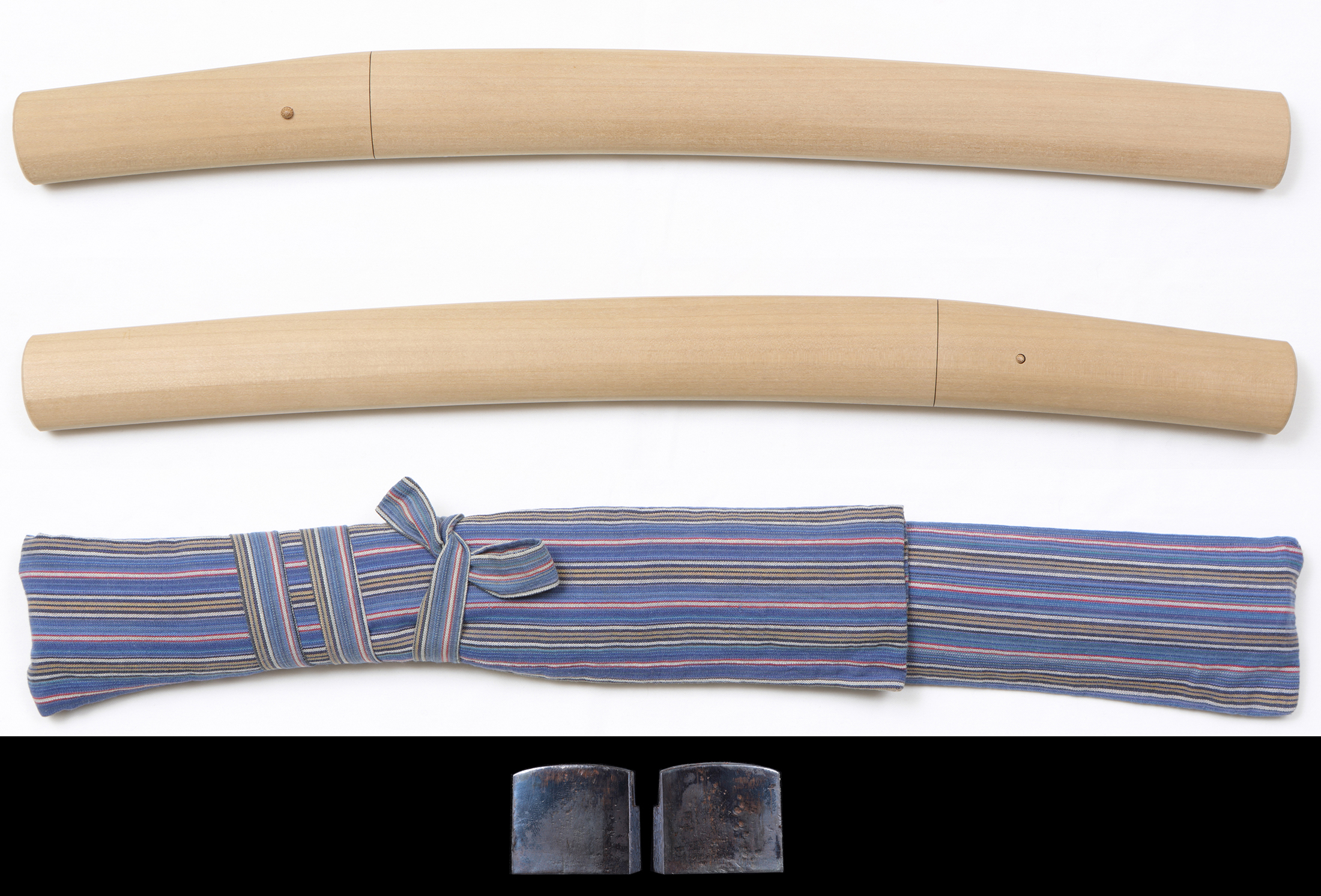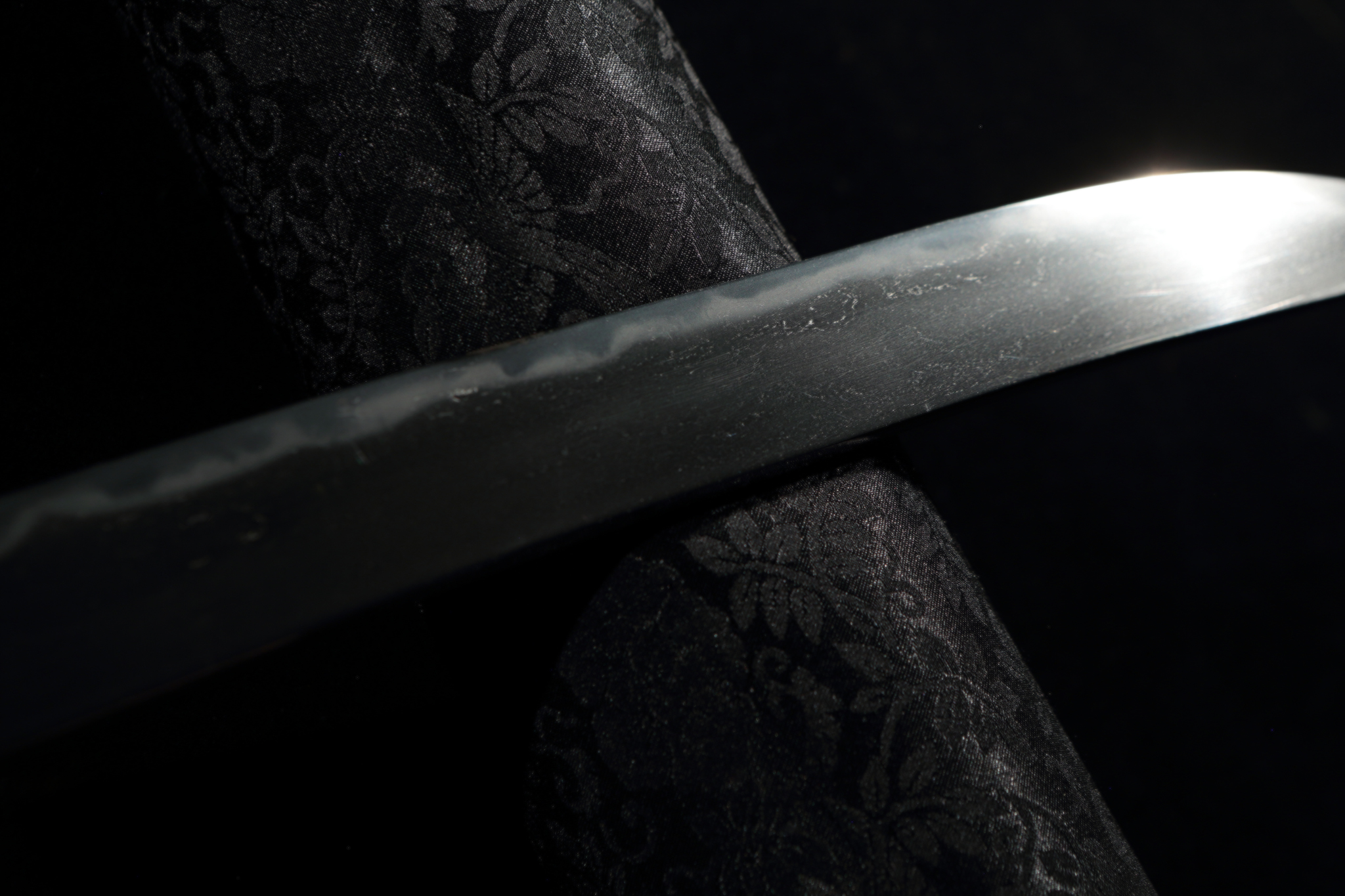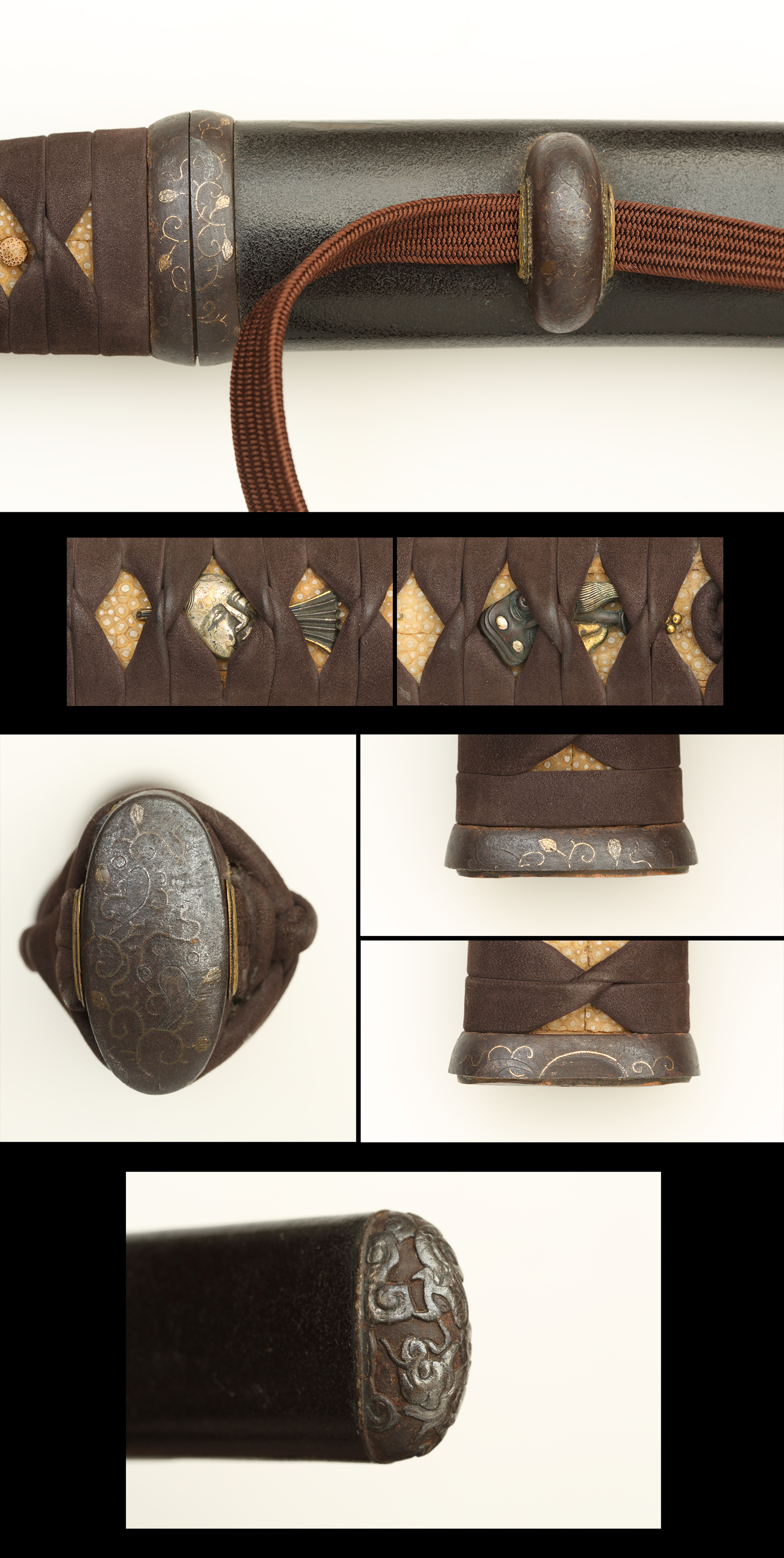

 |
Wakizashi, Shirasaya, Koshirae
|
Mumei, attributed to Sue-Seki
|
[ Signature ] omote : no signature ura : -
|
[ Size ] Blade length 31.52cm (1 shaku 0 sun 4 bu 0 rin), sori 0.75cm (2 bu 5 rin), moto-haba 3.05cm, moto-kasane 0.60cm, mekugi-ana(hole) 1, blade weight 239g , shirasaya length 49.5cm, koshirae length 49cm |
[ Period ] Muromachi, end of |
[ Province ] Mino "美濃" |
 |
[ Feature ]
Form : Hira-zukuri. Iori-mune. Mihaba is wide. Kasane is ordinal. Saki-zori attached. Ko-wakizashi form.
Nakago : Yasurimes are kiri. Saki is kuri-jiri. Shirake-utsuri comes to be appeared. One hole.
Jigane : Ko-itame-hada well grained. Jinie attached. Shirake-utsuri comes to be appeared.
Hamon : Gunome-midare. Ko-ashis appeared. Ko-nies attached.
Boushi : It runs in shallow notare. Saki is komaru shape. It turns deep.
Koshirae : ishime-ji-nuri-zaya aikuchi-koshirae ; metal fittings : design of arabesque "唐草" and carp ; kurigata : (iron, gold nunome inlay) ; a pair of menuki : design of a No(h) mask (skaku-dô, katachi-bori, gold and sliver iroe) ; kojiri : design of clouds (iron, taka-bori)
石目地塗鞘合口拵 : 唐草図鯉口金具・栗形(鉄地金布目象嵌)、能面図目貫(赤銅地容彫金銀色絵)、雲文図鐺(鉄地高彫)
[ Highlight ]
Wide mihaba, saki-zori attached ko-wakizashi. Taking it into account the characteristic, nioi-based gunome hamon, it is considered as Sue-Seki "末関", created at Seki, Mino province during end of Muromachi period.
[ Conditions ]
There are some rough surface on jinga, for blade side. A little rust. Koshirae maintains excellent conditions, however, there are dents or detachment of laquer or blister. No kozuka attached.
|
[ Attachments ]
Habaki (shakudô, single), shirasaya, bag of shirasaya, koshirae, bag of koshirae NBTHK Hozon paper ( issued on 20th March Heisei 26(2014)) |
|
[ Item number ] A010320 [ Price ] SOLD |






